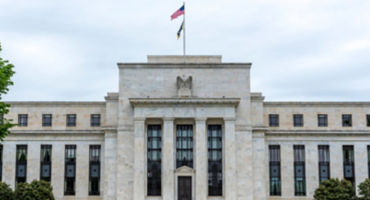In this survival-of-the-fittest landscape, high-quality companies have the potential to fare better than their peers. What constitutes high quality? High return on equity, low leverage, and stable earnings, to name a few characteristics. These types of stocks tend to be more resilient during volatile markets and are capable of providing compelling returns in both positive and negative investment environments. Active managers may be better equipped to parse these companies out than their passive counterparts because they have the flexibility to take a more qualitative approach, rather than allocate in alignment with market capitalization or other index compositions.
2. Seek to be in the right bonds
Another key characteristic of this new economic normal is uncertainty regarding interest rates and government bonds. Central banks face a growth/inflation trade-off, a dilemma that tariffs could exacerbate down the line. This means interest rates are less likely to be cut in response to economic shocks and regional divergence is likely to increase. This shifting central bank paradigm contributes to uncertainty in government bonds, historically heralded as a relatively safe haven, rocking the traditional mindset toward fixed income.
Today, it’s no longer about being in bonds, but about being in the right bonds at the right time. A “set it and forget it” allocation to government bonds in the name of downside protection isn’t likely to be very successful in the current environment. However, a strategic, adaptable approach could be. Greater regional and performance dispersion may be tricky to navigate, but it means there will be strong performers and weak ones. Flexible fixed income investors who apply a disciplined approach have a better chance of sniffing out those opportunities.
3. Don’t forget about high yield
In a similar vein, volatility can bring opportunity for high-yield investors in the form of wider spreads and increased dispersion across regions, sectors, and issuers. Yields are attractive in both US and European high-yield investments (though spreads are somewhat wider in the latter), which may be appealing to investors. Between these two, Europe stands out. This market is larger, more diverse, and higher quality than it’s been in the past, which may suggest alpha opportunities for discerning active investors.
This asset class, sometimes overlooked, offers a blend of growth potential and risk mitigation that can help investors balance out their portfolios. High-yield investments may help investors achieve a balanced approach by leveraging the benefits of both equity and fixed income markets. However, it’s important not to pursue income at the expense of everything else. Income matters, but so do durability and the quality of that income. The key for investors is to be selective and diligent about their choices in this space.
Bottom line
The new economic era is likely to be more challenging to navigate than the one we’ve grown comfortable with in the years following the GFC. It’s natural that this might make investors anxious, but one of the most prudent things they can do during this turbulent time is to stay focused on what matters. In our view, this may be quality. And remember, income is a critical component of total returns, but it’s important to be strategic — something easier to achieve with a flexible fixed income strategy than a rigid one. Change is here and more may be coming, but with it may come opportunities for investors who know where to look.




























